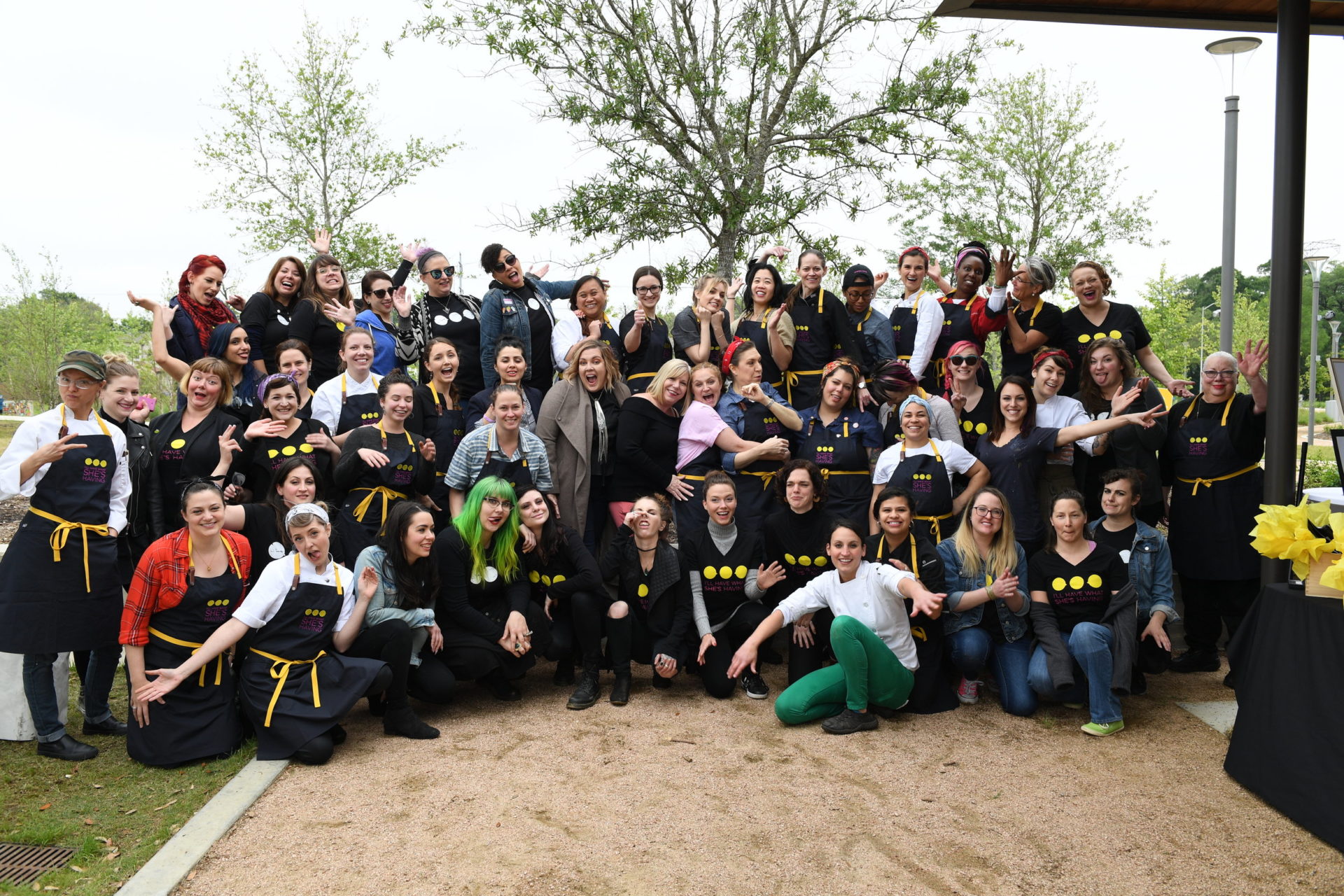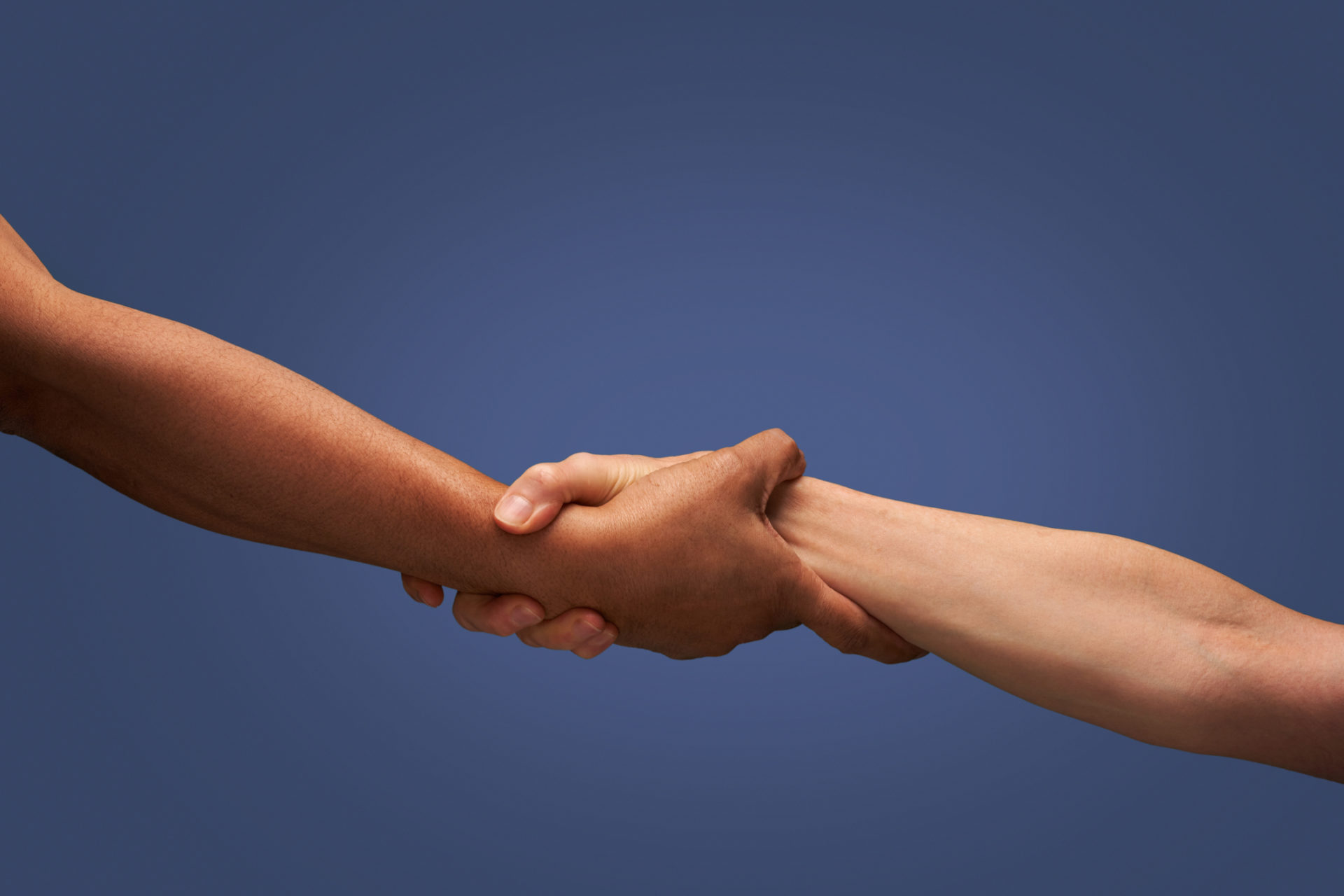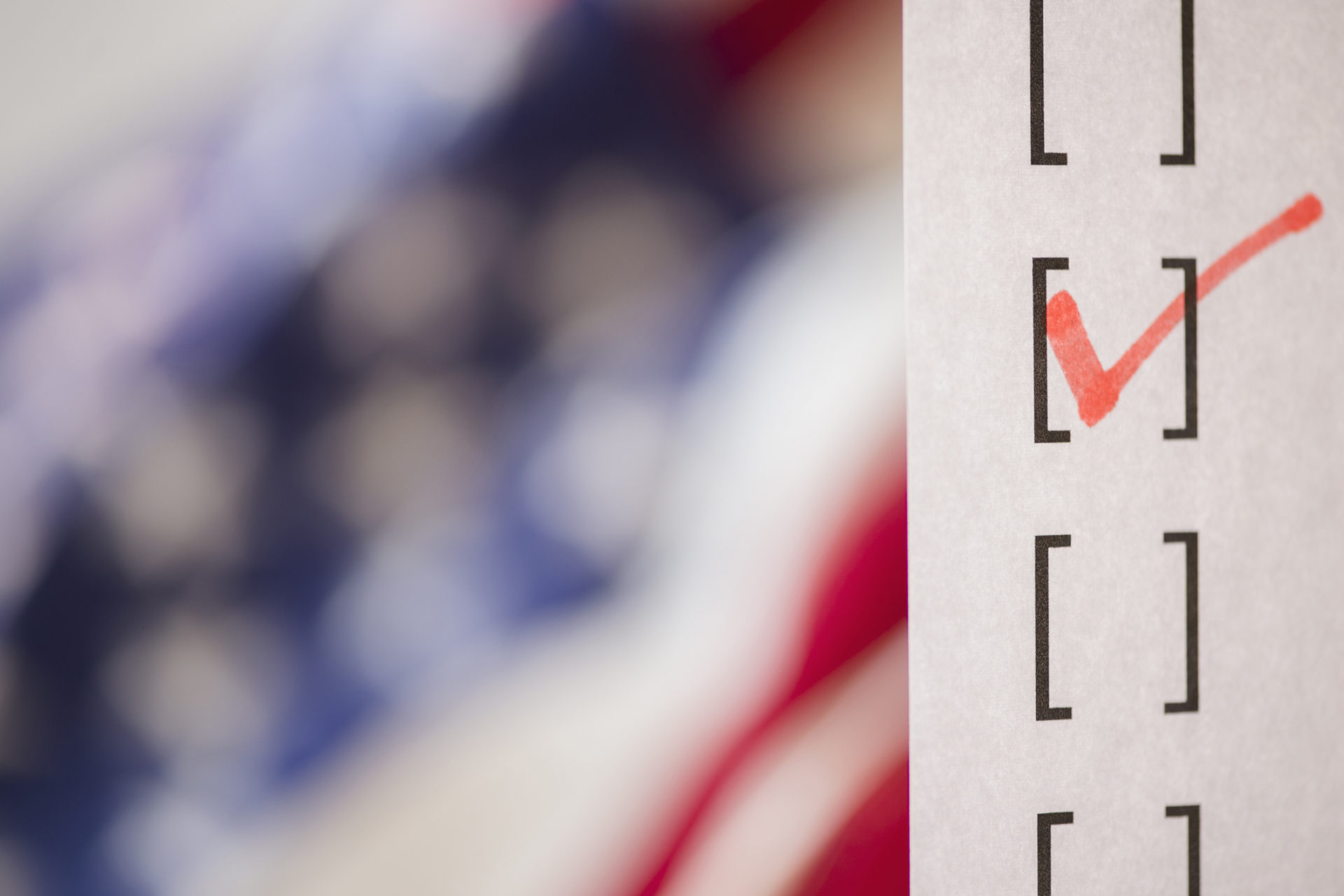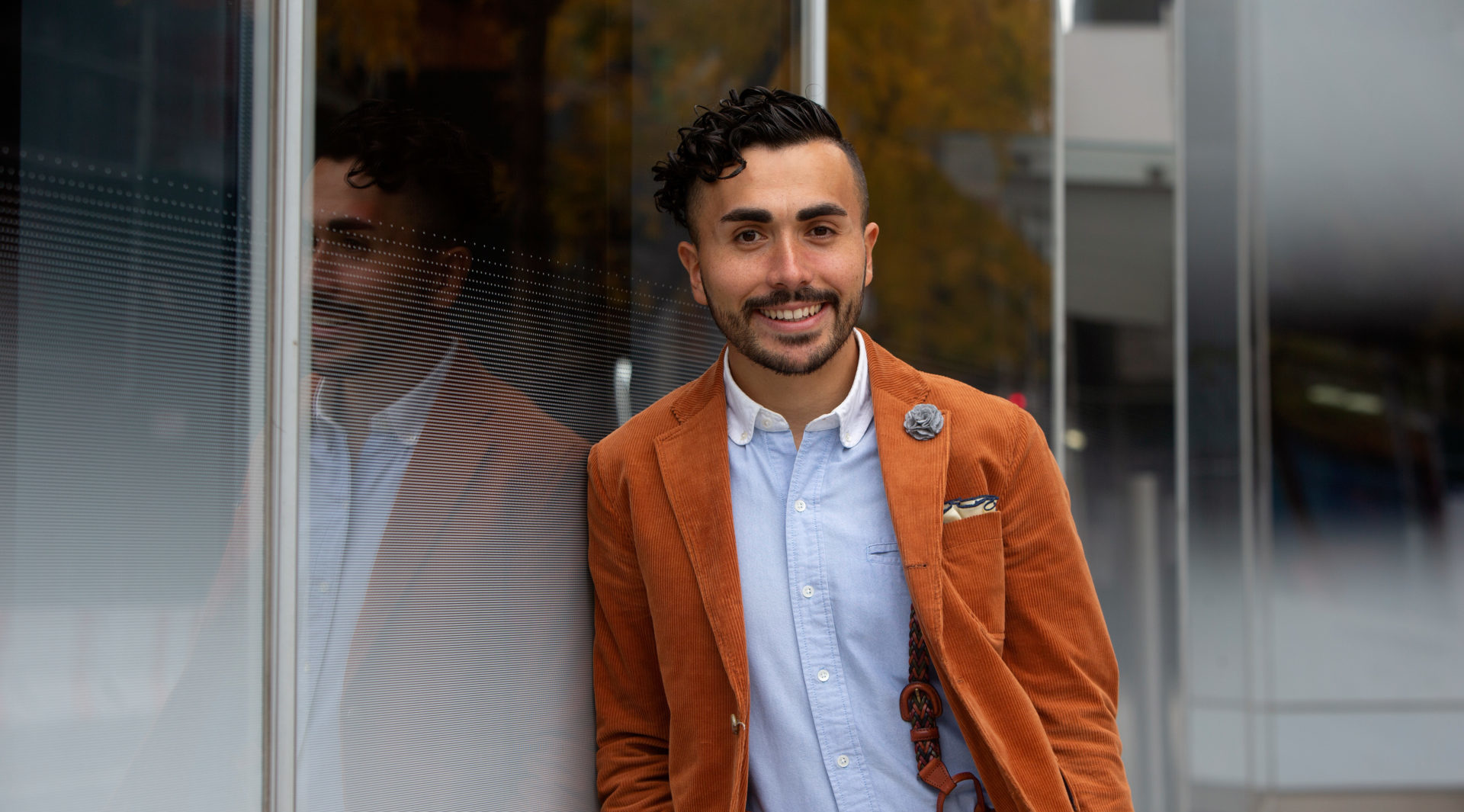NationSwell Council Member Lori Choi, M.D., is co-founder and Chief Executive Officer of I’ll Have What She’s Having, a Texas-based non-profit organization dedicated to breaking down systemic barriers that prevent hospitality workers — who are less likely to have health care than their counterparts in other industries — from getting the medical treatment they need.
Since the 2021 passing of SB 8, a Texas bill criminalizing abortions, Choi and her organization have accelerated their efforts to build coalitions and systems that support women and pregnant people in the industry seeking safe abortions.
Following the Supreme Court leak of a draft opinion reversing Roe v. Wade, a decades-standing precedent legalizing abortion in all fifty states, NationSwell spoke with Choi about what this moment means for our nation’s most vulnerable, why the work she’s leading matters now more than ever, and how anyone can get involved to support her mission to help uninsured and marginalized workers in Texas.
NationSwell: Thanks for talking today, Lori. Tell us about how your personal and professional journey led you to start I’ll Have What She’s Having.
Lori Choi, CEO, I’ll Have What She’s Having: I was living in New York and moved to Houston, Texas to train in surgery. Houston’s a known center for cardiovascular surgery. I’ve never regretted that decision — I just don’t think that I realized before I moved here exactly how conservative this state really was.
You hear stereotypes, but there’s no doubt that this state government was regressing, becoming more and more conservative, and there were some nutty things going on, and even being completely preoccupied with surgery training, the stuff would trickle through. And I found myself going around in a really grouchy mood all the time.
I finished training, and then my life was going pretty much as expected for an academic surgeon when Trump was elected. And by that time, I’d spent a lot of time with my husband’s peers, who were all in the food and beverage industry — that was my part-time job before medical school, and one of my first jobs after college.
This is an industry which is by and large uninsured, and very, very hard working. And the small businesses themselves, they don’t have large profit margins — so most are not able to provide benefits to their employees.
Here in Texas in 2011, there were some substantial changes made to family planning budgets in public health as a result of a tremendous change in the political makeup of the state legislature and the state Senate. They really pushed through a lot of budget cuts which were meant to attack abortion access — and they did this by shutting down family planning clinics.
And so we saw the writing on the wall for uninsured people, and we foresaw, with all those federal judgeships that were vacant at the time that Trump took office, we really could see the path to decreasing abortion access, which was already lousy in Texas in a lot of rural communities. So we decided to form our nonprofit, I’ll Have What She’s Having, which consisted of mostly chefs, restauranteurs, food and beverage workers, and several doctors.
NationSwell: Can you talk about your mission and how it took form?
Choi: Our mission was really to educate ourselves and our community on overcoming barriers to maintain our health and well-being, identify non-profit health care partners and raise funds for and awareness of their vital work, including women’s and mental health, and partner with professionals in science, medicine, sports and the arts to highlight the diverse coalition of individuals prepared to fight for a Texan’s access to high quality, affordable health care and reproductive rights.
The food community here is very beloved, and because of my husband and my backgrounds, I brought to the table those connections to both the medical center and food and beverage.
When we started, we raised the question of what participants wanted to raise money for — and it was really the restaurateurs and entrepreneurs who drove our efforts towards abortion protection. It didn’t come from me. Someone close to me really didn’t think it was a good idea for the volunteers’ careers.
The vast majority of Americans are quietly in favor of some form of safe and legal abortion. But these women were willing to put their names out there, to be the face of that pro-abortion majority. And to put their small businesses at risk. It’s quite common in liberal enclaves like New York or San Francisco to take a stand for abortion rights, but it really was quite unheard of for Texas.
But these young women were really adamant. They themselves had been patients of Planned Parenthood. And many of them — most of us — have been uninsured at one or more times in our careers. And they felt strongly that they wanted to make that stand.
I’m amazed by their courage. I know that some of them have suffered. One of our partners is a wonderful chef who, when she began to support abortion access, received death threats. We’ve had protestors show up at our events. After all they’ve been through with the pandemic, for these small businesses to stand up and make their voices heard at this crucial time, I think that should really motivate all of us to get outside of our comfort zones.
When we got started, we spoke kind of in euphemisms about abortion – we called it reproductive rights, women’s health. But in the summer of 2021, when SB 8, the Texas bill criminalizing abortion, got passed, we decided to change our language and start using the word abortion, talking about abortion as an issue of health care, of bodily autonomy, and how, until everyone in this country is guaranteed abortion access, 50% of our population doesn’t have the rights to decide what happens to their own bodies.
That lack of freedom is deeply disturbing to me as a citizen, as an individual. To have the government so involved in health care decisions, and discussions between a physician and his or her patient is, as a physician, deeply offensive. And now we’re preparing to return to a period of time prior to Roe V. Wade in which women routinely died of infection. And I really don’t see any way around that because states are putting in place legislation to criminalize even medical abortions. As long as that’s the case, pregnant people who don’t want to be pregnant will have no choice except to take serious risks with their lives. And we know from history what that means. It really is risky.
NationSwell: Why will the decision to overturn Roe v. Wade hit hospitality workers harder than workers in other industries?
Choi: The Texas government is profoundly hypocritical when it comes to this point. We have more uninsured individuals, men, women, and children than any other state in the country. We refused Medicaid expansion, which would have enabled some of our poorest citizens to access care.
Because of that, when people become pregnant, if they’re not insured, they’re less likely to have access to a physician at that point. And because of paperwork delays, people will often not see a physician until their second or even their third trimester. As a result, we have increased infant mortality, and one of the highest maternal mortality rates in the country — especially for women of color.
We walked into all of this because in 2011, when the Texas Legislature slashed the family planning budget, we actually saw 83 community clinics close in the next several years because that lack of funding meant that they weren’t unable to keep their doors open to provide low cost, quality care to women who weren’t insured.
So uninsured people with ovaries don’t have access to contraception. They don’t have access to consistent medical care to treat their chronic illnesses. If they become pregnant, they often are going to be a high risk for complications during and after pregnancy. If they have high blood pressure, if they have poorly controlled diabetes, these factors will really impact the health of their pregnancy. And if they are keeping the child, it oftentimes impacts the child health, as well as the health of the parent.
NationSwell: You mentioned that you moved away from saying “reproductive rights” and started to purposefully use the word “abortion.” What did that change for your organization?
Choi: As a woman in Texas, when we first got started, just to talk about anything between the belly button and the knees on a woman was really freaking people out. I mean, they just didn’t want to talk about women’s health, which is so strange to me. But we feel like we’ve really turned the corner on that part, at least. We advocate for mammograms, STD screening, cancer screenings — all of which involve pap smears that take place in this general region. But abortion is a procedure which one in four persons in the US with a uterus need during their lifetime. So, it’s very, very common. It’s very, very needed. And until we normalize discussion about all parts of it, including using the word “abortion” itself, it’s really, really difficult to get people to think about what individuals actually need.
Under conservative status quo, the majority of the responsibility for avoiding pregnancy has fallen squarely on people who have uteruses. So, until we normalize that kind of conversation, I really think it’s difficult for us to move forward. And until people voice their support for abortion, I think that the politicians are just not going to get it.
To say things like reproductive justice, reproductive healthcare, I just don’t think that we’re getting people to really think about what’s involved with that. And that’s part of the reason why we felt like we needed to change our language and to be part of that change for the community. We did see a decrease in press coverage for our events when we changed that language, but since the Politico article really is a wakeup call for everyone who’ve been ignoring the course of history, I don’t think the press can shy away from this discussion any longer.
NationSwell: What are some of the ways I’ll Have What She’s Having is taking action?
Choi: Most of the women we support are uninsured. I’m not actually certain how some of them are getting their contraception, but we’re really trying to encourage women to get that annual visit with their physicians, for people to go and have that preventive medical exam and get their care.
It’s not realized, but if you look at people who are born with an XY chromosome, the biggest cause of mortality for someone until they’re about 50 is trauma and accidents. But for people who are born XX, cancer actually becomes the leading cause of mortality in their 20s.
So it’s really important that we encourage people to go to the doctor, even at a young age. And we’ve really advocated for that. We have a small fund, which allows people from the restaurant industry to get that preventive medical care on an annual basis. And we’re trying to do more to educate people in the industry to stay well, rather than treat themselves when they’re sick.
We’ve also held a series of happy hours at different bars called Abortion Support. Historically, it’s been speakeasies and taverns where a lot of political activity and change took place. And we’ve been really appreciative how the bar owners in our community have been willing to take on that role here in Houston, and push that conversation forward.
Unfortunately, the Delta variant kind of took out those plans for the summer. So, we regrouped and we engaged in a social media campaign called the 1973 Project.

The restaurant industry loves masking tape — they take masking tape and put it on everything, they label all of their food behind the bar and in the walk-ins. And so we had a wonderful photographer, Emily Jaschke, work with us, and employees would put this blue tape or masking tape somewhere on their bodies with a pro-abortion slogan, post a photo, and donate $19.73 to our fund. So, with a matching donor, we were able to donate $60,000 after about six weeks of social media campaigning to the abortion funds across Texas in response to SB 8.
And with the upcoming expectation that Roe V. Wade is going to be overturned, we’re really trying to push and continue with that conversation. Engage more people on a national level so that they’re able to have their voices heard —because we can’t just wait till the election. I think it’s really important that we find a way for people to easily register their protests to the changes that are taking place.
NationSwell: What are some of the ways we can support your organization, and support uninsured women and people with uteruses in the hospitality industry?
Choi: I’ll Have What She’s Having can always use your help! We’re planning a national fundraiser in September in which we’ll be able to engage with people all over the country — and we’re interested in sponsorship for that. That’s going to be chefs getting together nationally to prepare a meal which can be sent around the country via FedEx or UPS. And we’re going to be able to use that money to distribute the funds nationally, especially to the states who are probably going to be having full abortion bans to help people that are going to need to travel to get that abortion care.
Right now, we are supporting six different abortion funds in Texas, and our September fundraiser will expand nationally. But when we speak to those abortion funds, the cost of their being able to support a single patient has just skyrocketed because they need to provide either bus or airfare, as well as usually overnight hotels stay for either one or two days. People who are leaving, the vast majority of them who need abortions already have children and family responsibilities. So, those organizations are also helping individuals get childcare so that they’re able to leave the state for care.
On top of this, we always encourage everyone to call our senators and congressmen to speak out in favor of abortion access. The Women’s Health Protection Act was passed in the House and then failed in the Senate. But that bill, when it comes up, would be a way for us to get around while we’re expecting SCOTUS to officially overturn Roe v. Wade in June.
It’s very important that we really come to this from a place of our shared humanity. It’s important that we say to state and national governments that we believe that bodily autonomy is a human right. And regardless of whether it touches me, or my siblings, or my parents, our loved ones directly or not, it’s just something that we understand and feel with all of our fellow humans that we have to stand up for this — now.








